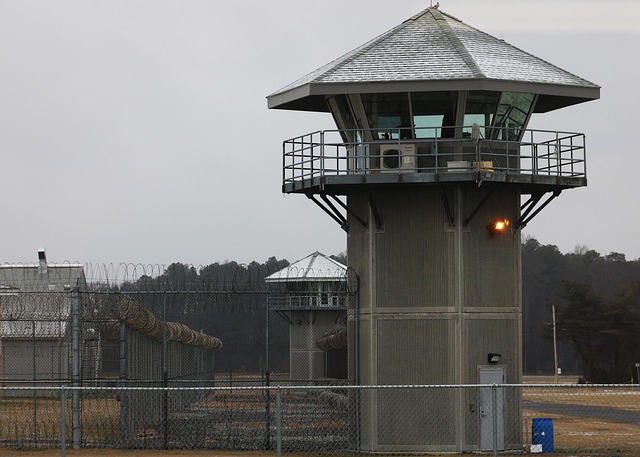Protecting Political Leaders: Rapid Response Teams for Threat Neutralization

Rapid response teams play a vital role in safeguarding political figures and high-value assets throu…….
Introduction
The intricate realm of political discourse is often fraught with challenges that extend beyond the public eye. Among these are the security concerns that accompany high-profile political figures. Executive Protection for Political Figures (EPPF) is a specialized field designed to safeguard the lives and wellbeing of individuals in political positions who may face threats due to their influence or status. This article delves into the critical aspects of EPPF, exploring its significance, global impact, economic considerations, technological advancements, policy landscapes, challenges, case studies, and future prospects. Readers will gain a comprehensive understanding of how EPPF operates and its indispensable role in modern politics.
Understanding Executive Protection for Political Figures
Executive Protection for Political Figures encompasses a range of security measures and protocols aimed at protecting political leaders, candidates, and their families from potential harm or threats to their safety. The core components of EPPF include threat assessment and management, travel security, communication systems, emergency response planning, and the use of protective details or bodyguards.
The historical context of EPPF is rooted in the need for personal security among leaders who have historically faced assassination attempts or other forms of violence. Over time, the discipline has evolved from a focus on physical protection to a comprehensive approach that includes cybersecurity, intelligence gathering, and strategic planning. It plays a pivotal role within the broader landscape of national security and political stability.
Global Impact and Trends
The global impact of EPPF is profound, as it directly influences political stability and international relations. The protection of key figures can prevent conflicts, maintain the status quo, and ensure the continuity of governance. Different regions face unique challenges; for instance, in high-risk areas with ongoing conflicts, the focus may be on physical protection and evacuation planning. In contrast, regions with more stable security climates might prioritize cybersecurity measures.
Key trends shaping EPPF include the increasing reliance on technology for surveillance and threat analysis, the rise of transnational threats requiring coordinated international responses, and the growing emphasis on privacy and personal data protection in light of technological integration. These trends underscore the dynamic nature of EPPF and its critical role in adapting to a rapidly changing global security landscape.
Economic Considerations
The economic aspects of EPPF are multifaceted. Market dynamics influence the demand for specialized services, leading to a competitive landscape where companies strive to offer innovative solutions. Investment patterns in security technology and infrastructure reflect both private and public sector commitments to safeguarding political figures.
EPPF contributes to economic systems by fostering a secure environment conducive to political stability and investment. In countries with volatile security situations, EPPF can be a significant economic driver, as it generates employment and stimulates market demand for specialized services and technologies.
Technological Advancements
Technological advancements have revolutionized the field of EPPF. Innovations such as biometric identification systems, AI-driven threat intelligence platforms, and encrypted communication networks have significantly enhanced the protective capabilities of detail teams. The integration of drones for aerial surveillance and real-time data analytics tools has provided unprecedented situational awareness.
The future potential of technology in EPPF is vast, with emerging advancements like predictive analytics offering the promise of proactive threat prevention rather than reactive measures. As technology continues to evolve, so too will the strategies employed by EPPF professionals.
Policy and Regulation
The governance of EPPF is guided by a complex tapestry of policies, regulations, and legislative frameworks that vary by country and region. These rules dictate the use of surveillance technologies, the handling of sensitive information, and the deployment of protective details. They also establish accountability mechanisms to ensure that EPPF activities are conducted ethically and lawfully.
Compliance with these regulations is crucial for maintaining public trust and ensuring that political figures’ rights are respected while they are under protection. Policies must adapt to evolving threats and technological advancements, reflecting a balance between security needs and civil liberties.
Challenges and Criticisms
EPPF faces several challenges, including the need for effective intelligence sharing among international bodies, addressing the potential for abuses of power, and balancing openness with privacy in an increasingly digital world. Critics often point to instances where EPPF measures have infringed on civil liberties or have been perceived as excessive or overly intrusive.
To overcome these issues, a multifaceted approach is required that includes rigorous training for protection personnel, transparent reporting mechanisms, and the continuous evaluation of EPPF practices against human rights standards. By addressing these challenges head-on, the field can evolve to better serve its purpose without compromising the values it is meant to protect.
Case Studies
Several case studies highlight the successful application of EPPF. Notable instances include:
These examples demonstrate the effectiveness of EPPF when it is well-executed and tailored to the specific risks faced by political figures.
Conclusion
Executive Protection for Political Figures is a critical component of national security, international relations, and political stability. It requires a sophisticated blend of tactical expertise, technological innovation, and policy oversight. As the global landscape continues to evolve, so too must EPPF adapt to meet new challenges head-on. By fostering a culture of continuous improvement and adhering to the highest ethical standards, EPPF can ensure the safety of those who lead and make decisions for societies around the world.

Rapid response teams play a vital role in safeguarding political figures and high-value assets throu…….

Protecting political figures during transportation and events requires a specialized approach due to…….

Political figures face diverse security threats, from physical harm to online harassment and cyberat…….

Political leaders face unique threats demanding a specialized multi-layered approach to personal sec…….

Political events require stringent security measures due to high-profile political figures. Effectiv…….

Political figure security is a specialized and dynamic field within close protection, addressing uni…….

Securing political events requires specialized strategies addressing high-profile risks, large crowd…….

Protecting political figures demands sophisticated strategies due to their high-profile nature and d…….

In a high-stakes political landscape, VIP protection for government officials is vital for their saf…….